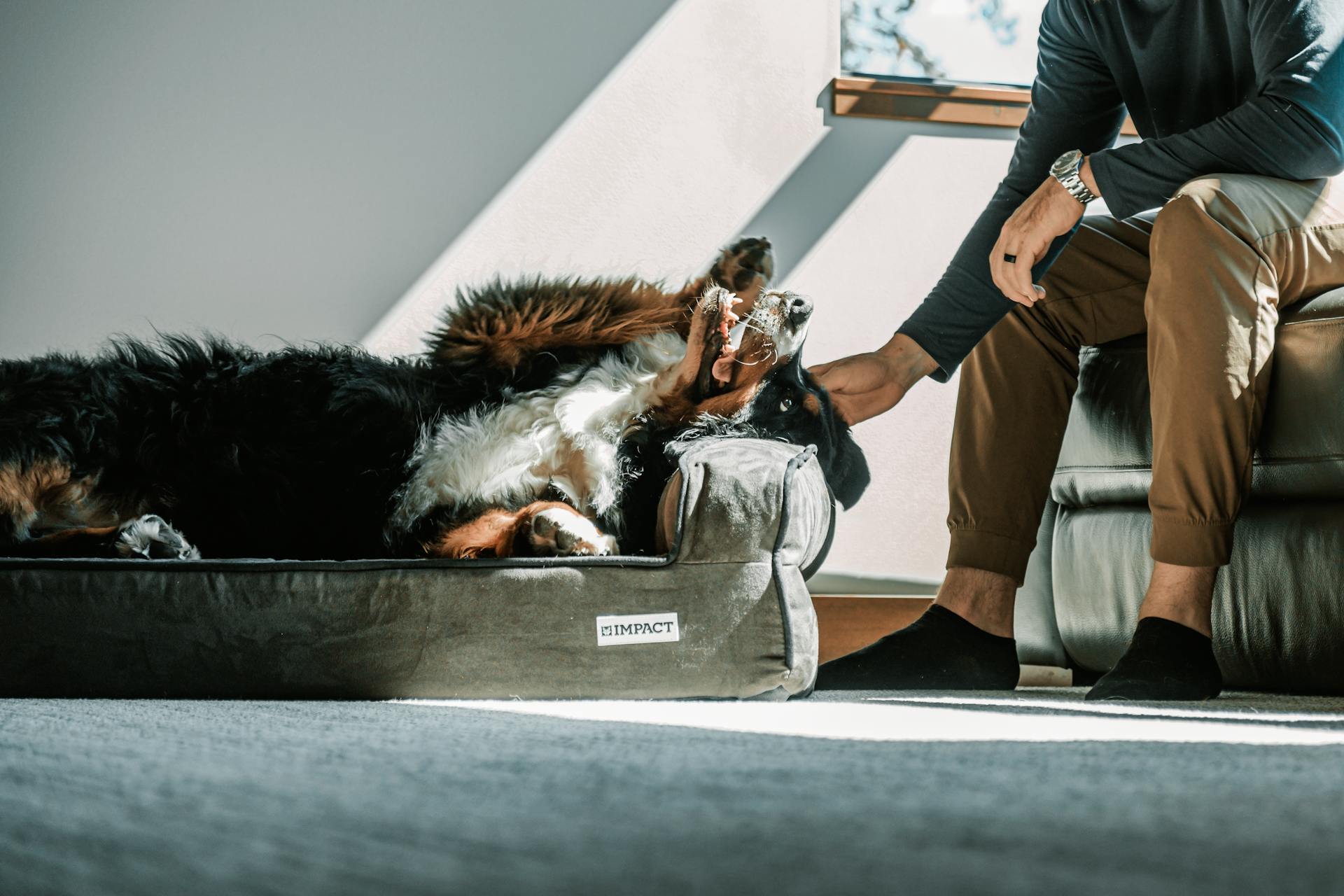
The Turnspit Dog was a vital member of many kitchens in the past, responsible for turning meat on a spit to cook it evenly. These dogs were often bred specifically for this task.
Their origins date back to the 16th century in Europe, where they were valued for their strength and endurance. They were often trained from a young age to perform this task.
The Turnspit Dog's evolution was influenced by the need for a reliable and efficient kitchen assistant. Their physical characteristics, such as a sturdy build and short coats, made them well-suited for this role.
These dogs were an essential part of many households, particularly in wealthy families who could afford to keep them as pets.
Physical Characteristics
The Turnspit Dog had some pretty unique physical characteristics. They were typically grey and white, black or reddish in color.
Their bodies were low to the ground, which is likely due to their purpose in life - they were kitchen dogs, after all! Their short legs were often crooked in front, which is a trait that's still seen in some breeds today.
Their heads were heavy, and their ears were droopy. They were strong and sturdy, with excellent stamina, which is impressive considering their small size.
Here are some key physical characteristics of the Turnspit Dog:
- Grey and white, black or reddish fur
- Low bodied
- Short legs that were crooked in front
- Heavy head
- Drooping ears
- Strong and sturdy
- Excellent stamina
Working and Obsolete
Turnspit dogs were used for various domestic tasks in addition to roasting meat, such as churning butter, pressing fruits, pumping water, and milling grain.
They were handy to have around, but their working conditions were harsh, especially in kitchens where they were forced to run next to the blazing hot spit roast for hours without access to water.
Many turnspit dogs worked in pairs, trading off on the meat-spinning hamster wheel, which is possibly the origin of the phrase "every dog has his day."
Their situation was probably worse than the spit boys, who at least had some protection from the heat.
The dogs had to continuously work in the hot kitchen, and on busy days, they would suffer from intense dehydration if they didn't receive water.
Suggestion: Raw Dog the Naked Truth about Hot Dogs
Some owners even treated their turnspit dogs harshly if they showed signs of tiredness on duty, by putting a hot coal into the wheel to make them move their feet more quickly.
By the 19th century, many animal activists began to notice the torture of turnspit dogs and started raising their voices.
The development of mechanical tools like spit-turning clock jacks eventually freed turnspit dogs from the horrors of hellish kitchens.
However, nobody was ready to keep them as regular pets, as it was considered a stigma of poverty to have a turnspit dog.
The turnspit dogs were now of no use to humans, and their population declined continuously until they became completely extinct.
Characteristics of Dogs
The Turnspit Dog was a unique breed, and understanding its characteristics can give us a glimpse into its purpose and daily life.
These dogs were typically grey and white, black, or reddish in color.
Their low body and short legs made them well-suited for navigating the kitchen, but their legs were also crooked in front, which was a notable feature.
A Turnspit Dog had a heavy head and drooping ears.
They were strong and sturdy, which was essential for their job.
One of the most impressive characteristics of the Turnspit Dog was its excellent stamina, allowing it to work tirelessly in the kitchen.
Curious to learn more? Check out: Bull Terrier Temperment
Frequently Asked Questions
Were turnspit dogs treated well?
No, turnspit dogs were not treated well in the hotels of Manhattan in the 1850s. Their poor treatment led to the founding of the Society for the Prevention of Cruelty to Animals (SPCA).
What is a preserved example of a turnspit dog?
A preserved example of a turnspit dog is Whiskey, a stuffed dog on display at the Abergavenny Museum. Whiskey is the last known surviving specimen of a turnspit dog, a type of working dog used in the past.
Why did the turnspit dog go extinct?
Turnspit dogs went extinct due to the decline of their specific function in kitchens with advancements in technology. Their numbers dwindled as they were no longer bred for their purpose.
What is the personality of a turnspit dog?
Turnspit dogs were intelligent and loyal, but their working nature made them less affectionate. Despite this, they were capable of independent problem-solving and teamwork.
What is the meaning of spit dog?
A Spitz dog is a type of stocky, heavy-coated dog with erect ears and a furry tail, originating from northern breeds. This breed is characterized by its distinctive physical features and northern origins.
Sources
- https://en.wikipedia.org/wiki/Turnspit_dog
- https://www.npr.org/sections/thesalt/2014/05/13/311127237/turnspit-dogs-the-rise-and-fall-of-the-vernepator-cur
- https://animals.howstuffworks.com/pets/turnspit-dogs.htm
- https://www.timbertown.com/the-dog-that-manned-the-meat-how-the-turnspit-dog-was-bred-to-bbq/
- https://www.zmescience.com/feature-post/natural-sciences/animals/pets/turnspit-dog-extinct-kitchen/
Featured Images: pexels.com


